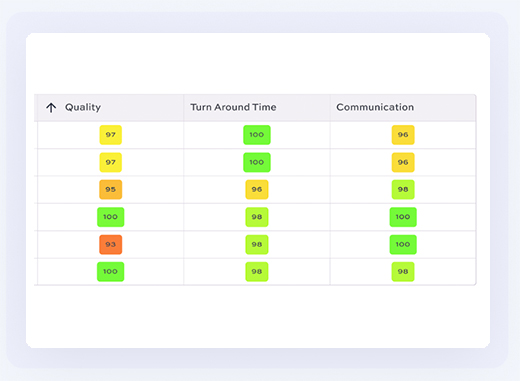Best Practices for Overcoming Common Challenges in Supplier Performance Management – Part 1
In today’s intricate supply chain environment, effective AI-driven Supplier Performance Management (SPM) is essential for maintaining operational efficiency, nurturing supplier relationships, and driving business growth.
Organizations often face several challenges in managing supplier performance, such as identifying top performers and ensuring timely action based on insights. SupplyHive™ offers a robust suite of tools designed to address these challenges, enabling more informed decision-making and enhanced performance across your supply chain.

1. Supplier Matrix: Simplify Performance Identification
-
- Challenge: Identifying top-performing and underperforming suppliers across various categories can be complex and time-consuming.
Best Practice: Use the Supplier Matrix for a consolidated view of supplier performance. This tool categorizes and ranks suppliers using a mirrored taxonomy, allowing for swift decision-making and targeted performance improvements.
- Challenge: Identifying top-performing and underperforming suppliers across various categories can be complex and time-consuming.
2. Hive Analytics: Enhance Insight Generation
-
- Challenge: Aggregating and analyzing supplier data from multiple dimensions can lead to delayed insights and suboptimal decisions.
- Best Practice: Implement Hive Analytics to aggregate supplier scores across categories, locations, and business units. This facilitates streamlined reporting and faster analysis, empowering timely performance enhancements and keeping your organization competitive.
3. Scorecard: Convert Data into Actionable Insights
-
- Challenge: Extracting meaningful insights from supplier data can be difficult without a structured framework.
- Best Practice: Leverage the SupplyHive™ Scorecard, which utilizes AI and machine learning to summarize both quantitative and qualitative data, providing actionable insights that highlight growth opportunities and areas needing improvement.
4. Benchmarks: Contextualize Supplier Performance
-
- Challenge: Assessing supplier performance without industry context can lead to misinterpretations and misguided strategies.
- Best Practice: Use the Benchmark Quadrant to compare supplier performance against industry peers based on overall scores and specific KPIs. This contextual approach supports strategic decision-making and aligns supplier expectations with industry standards.
5. Trends: Monitor Supplier Progress Over Time
-
- Challenge: Tracking supplier progress or decline across different KPIs can be challenging without proper trend analysis.
- Best Practice: Utilize the Trends feature to monitor supplier progression or regression within each KPI, providing historical context that supports informed decision-making and targeted performance improvements.
Contact a SupplyHive™ Representative to see these solutions in action.

